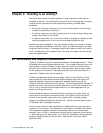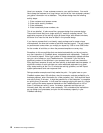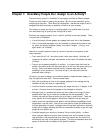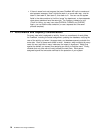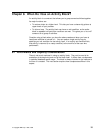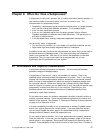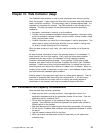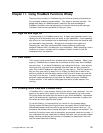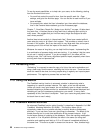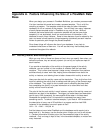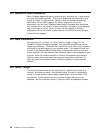
Chapter 10. Data Container Usage
The FlowMark data container is used to pass information from activity to activity
within the process. It also controls the flow within the process when data fields are
used in transition conditions. The terminology used is “process-relevant data.” It is
important to understand this concept. The data container is not intended to be a
database. The data you specify for the data container should be specifically
needed for:
Navigation, referenced in transition or exit conditions.
Pointers into your enterprise databases where the application information really
exists (for example, customer number, account number, invoice number, image
folder, and document name).
Variable information you would like to have appear in activity descriptions. This
helps users to quickly find particular activities, and can assist in limiting work
list size by Include (filtering) and Find functions.
While the data container is very useful, you need to be careful not to abuse the
concept.
All data container information is kept in the process instance in the database. It
stays there for the life of that instance. Every input and output data container
created along the way exists in the database until that instance is deleted.
Consider a somewhat extreme example. If you specified 10,000 bytes of data
container, then pass it to/from 20 activities, it appears 20 times in your FlowMark
database. It takes many times its original space since it is copied over and over,
remaining there from the time the instance is created until it is deleted. When you
multiply by the number of instances you may have in your database at peak times,
you could encounter database space problems.
Another aspect is the impact this might have on runtime client response. There is
overhead in accessing data items using the container APIs. If you have many
items, most of which are not really used in an activity but merely passed on
downstream in the process, there may be unneeded delays at the client.
10.1 Performance and Capacity Considerations
Here are some data container guidelines:
Keep only key data in the data container. Keep application data in the
application databases and let the applications access it from there. Pass the
application the key needed to find it.
Do not take the approach of just passing all data to every activity in the
process. Have different structures that represent the specific data needed at
different points in the process.
Map data elements to the specific point where they are needed in the process.
Do not use the FlowMark data containers as an application database or a data
file server.
Use the newest container APIs for the client.
While you should use descriptive names for data fields, do not make them
extremely long.
Copyright IBM Corp. 1996, 1998 19



